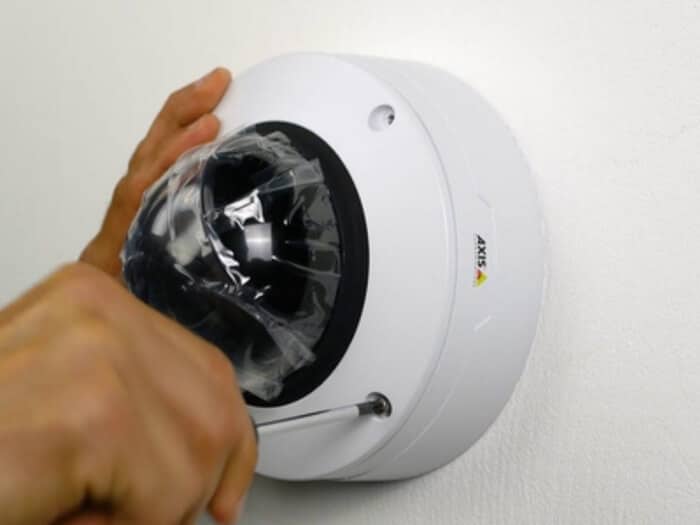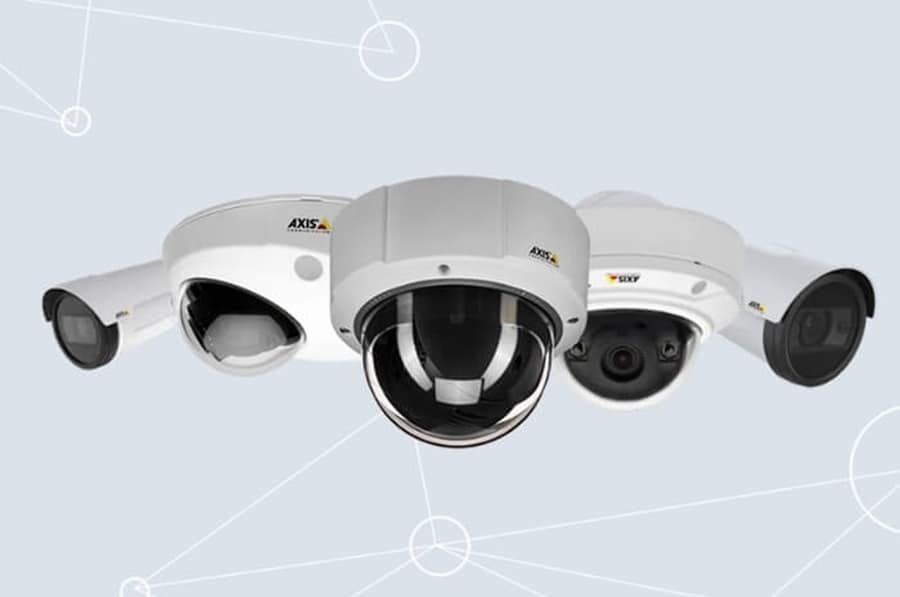According to Eagle Eye Networks, Axis Communications is literally the first name in IP security cameras — Axis actually invented the networked digital camera, and in 1996 released the groundbreaking Axis NetEye 200.
Along with a pair of other industry giants, in 2008 Axis forged the ONVIF industry standard, which remains the core of today’s video surveillance industry, and which allows companies to innovate with features while remaining committed to compatible video output formats.
Because Axis cameras are ONVIF compliant, Eagle Eye Networks says its video management system — Eagle Eye Cloud VMS — has long been able to use Axis’s highly regarded cameras so users could watch live or recorded video from anywhere. As with any other maker’s cameras, video captured on site by users’ Axis cameras would flow first to an Eagle Eye Bridge or CMVR (cloud-managed video recorder), then be transmitted fully encrypted to an Eagle Eye data centre. From there, video can be searched and reviewed from anywhere with Eagle Eye’s user-friendly VMS interface.

Skipping the bridge, when it makes sense
Eagle Eye Networks’ recently introduced Eagle Eye Camera Direct cameras simplify network installation by eliminating the need for a bridge or CMVR, instead securely transmitting video straight from the camera to the Eagle Eye cloud over an encrypted connection. As with its Bridge / CMVR-based configurations, that video is gathered by a camera that’s never exposed to the security risk of inbound network connections.
Until recently, Camera Direct was available only with Eagle Eye cameras. The company is pleased that now, thanks to a technology partnership between Eagle Eye and Axis, and leveraging the Axis Cloud Connect platform, Axis cameras can also transmit data directly to Eagle Eye cloud storage using secure APIs, with no need for a bridge and with the same kind of always-on encryption to protect data.
For customers using Axis equipment, enabling direct video transmission is only one of Axis Cloud Connect’s benefits: Cloud Connect also helps unite their on-site infrastructure for configuration, updates, and hardware audits, and offers one-click cloud device connection.
By eliminating the need for an on-premise bridge or video recorder, and with Eagle Eye’s cloud capabilities, direct connection enables fast camera deployment without sacrificing video quality or changing retention options. Additional cameras can be easily integrated, too, limited only by available network bandwidth.
The impact of direct
Compared to a conventional installation, direct camera connections to VMS storage reduce the steps needed to deploy new equipment. Each camera serves as both a video gathering device and a secure upstream networking powerhouse. You can extend your security footprint simply by placing a new surveillance camera, supplying it with power, and connecting it to your network — without needing to configure, upgrade, or purchase additional on-site equipment. That’s especially valuable when on-site infrastructure is already crowded, or not available.
Use cases for bridge-free connections

- Temporary installations
- Retail settings
- Edge-of-property installations
On powering up, each camera “phones home” — it makes a secure network connection to the Eagle Eye data centre, establishing an encrypted link through which video data can flow. Because this link always starts from the camera, one of the most common security risks of IP cameras is eliminated, right from the start. No hacker can attack with common vulnerabilities that exploit cameras’ open ports, because inbound connections are never available to them.
Direct camera links, though convenient, offer greater advantages in some situations than others. For new installations, they may eliminate the need for any on-site bridge; for existing ones at or near capacity, additional cameras added with direct connections mean there’s no strain put on existing bridges or switches and no network tweaking required. Eagle Eye Cloud VMS users will simply see the new camera’s streams in the same interface they already know.
The flexibility of directly connected cameras in an open system like the Eagle Eye Cloud VMS also means that you’re free to mix and match camera types; you may find that conventional installation works well for your established infrastructure, but that a new branch office or outbuilding is easier to connect directly with Axis cameras.
Whatever your use case, the Eagle Eye team is here to help you understand your options.
Contact Eagle Eye Networks to get a customised solution for your business.
For more Eagle Eye networks news, click here





